 Cooking Light What To Eat
Cooking Light What To Eat 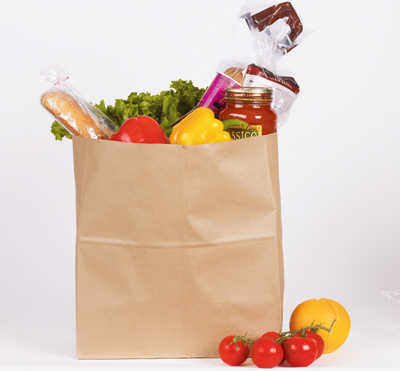
 Contents
Contents 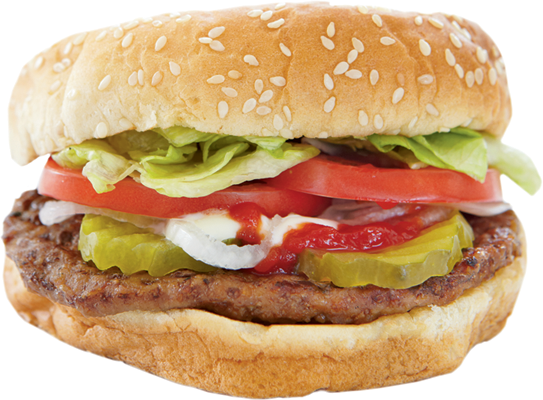
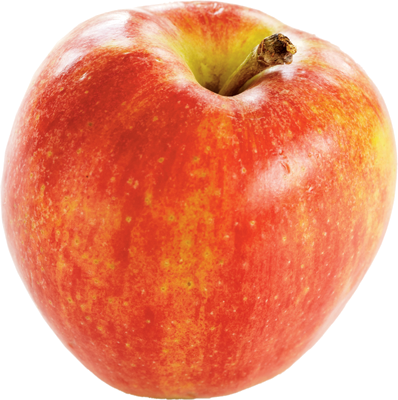
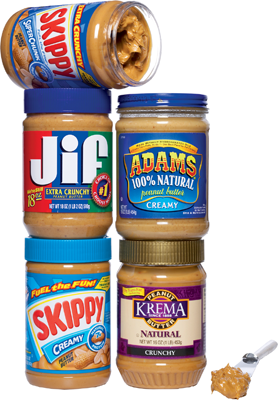
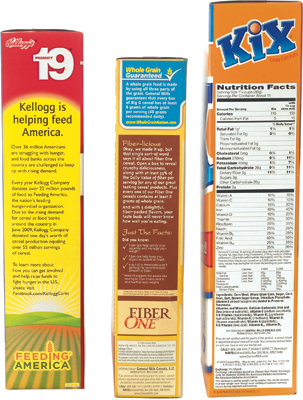

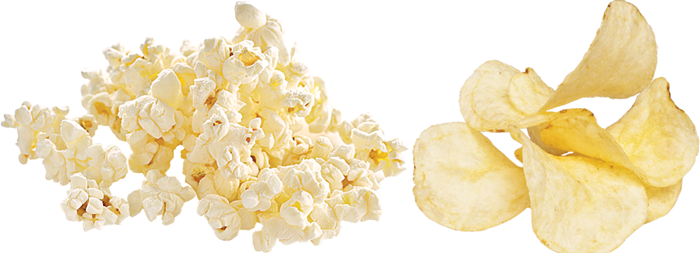
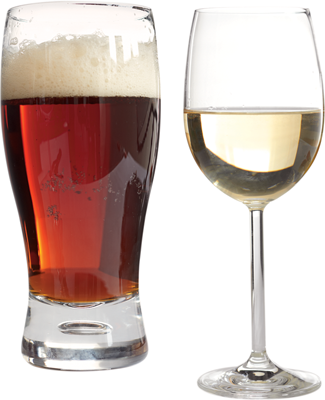 What to Eat?
What to Eat? 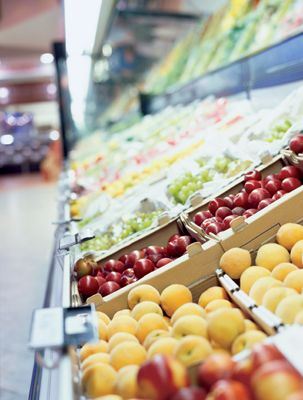 With so many products available in todays grocery stores, that question is often a complicated one for many people who are trying to find foods that fit their nutritional goals. With low-sugar, no-sugar, low-carb, all-natural, organic, and all the other health claims attached to food packages and nutrition labels, healthy eating can be stressfulbut it shouldnt be. Thats where this book comes in. It isnt filled with a list of specific brands of products that may be outdated in a week (although we do provide some of our favorite picks that we use regularly). Instead, weve distilled healthy eating into a set of straightforward guidelines that take you aisle by aisle through the grocery store. We teach you what to look for on the package and the nutrition labelfor any product to help you make the healthiest choice from the options in front of you.
With so many products available in todays grocery stores, that question is often a complicated one for many people who are trying to find foods that fit their nutritional goals. With low-sugar, no-sugar, low-carb, all-natural, organic, and all the other health claims attached to food packages and nutrition labels, healthy eating can be stressfulbut it shouldnt be. Thats where this book comes in. It isnt filled with a list of specific brands of products that may be outdated in a week (although we do provide some of our favorite picks that we use regularly). Instead, weve distilled healthy eating into a set of straightforward guidelines that take you aisle by aisle through the grocery store. We teach you what to look for on the package and the nutrition labelfor any product to help you make the healthiest choice from the options in front of you.
We give you the facts. Theyre the very same ones we use when were standing in the bread aisle (or the canned food aisle or the meat section or the freezer section) choosing from the hundreds of options. We want to help you eat healthy and get the most nutritional bang for your grocery store dollar. Heres how.  Scott Mowbray, Editor Our Grocery Store Guide
Scott Mowbray, Editor Our Grocery Store Guide  Our Guide to the Healthiest Shopping Healthy eating begins in the grocery store. Here are the basic tips for getting startedtheyll help your health and your budget.
Our Guide to the Healthiest Shopping Healthy eating begins in the grocery store. Here are the basic tips for getting startedtheyll help your health and your budget.
Base meals on items from the grocery store perimeter. 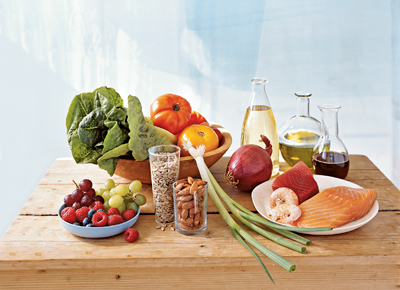 Shopping along the outside edges of the grocery store is the easiest way to amp up the nutritional quality of what you eat. Thats because the perimeter is where a majority of stores feature inherently healthy foodsfresh fruits and vegetables, fish, meats, poultry, and dairy products. Youll also want to shop the aisles containing 100% whole-grain breads and pastas and whole grains such as oatmeal, barley, and quinoa. Compare apples to apples (and chicken to chicken).
Shopping along the outside edges of the grocery store is the easiest way to amp up the nutritional quality of what you eat. Thats because the perimeter is where a majority of stores feature inherently healthy foodsfresh fruits and vegetables, fish, meats, poultry, and dairy products. Youll also want to shop the aisles containing 100% whole-grain breads and pastas and whole grains such as oatmeal, barley, and quinoa. Compare apples to apples (and chicken to chicken).  Skinless, boneless chicken breasts: $5.49 per pound
Skinless, boneless chicken breasts: $5.49 per pound 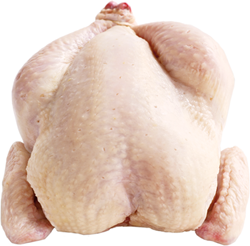 Whole chicken: $1.28 per pound Compare the prices of similar items.
Whole chicken: $1.28 per pound Compare the prices of similar items.
Make sure youre comparing pound per pound and serving per serving. Say youre considering a $7.50 package of skinless, boneless chicken breasts versus a $3.50 whole chicken. That $7.50 package with two chicken breasts is just over a pound and will feed two to three people, while the whole chicken is more than three pounds and will feed four, as well as make homemade chicken stock and soup. Look high and low. Prime product placement in grocery stores goes for a premium pricevendors sometimes pay retailers thousands of dollars for placement at middle and eye-level shelves. These products may be some of the healthiest and most affordable ones, but make sure you also check the upper and lower shelves for good (and nutritious) deals.
Buy in bulk.  Buying in bulk the foods you eat often can save you money. Steel-cut oats bought from the bulk bin, for instance, are $0.89 per pound, while a tin runs $3.35 a pound. Lentils, beans, and chickpeas are also great bulk savers, as well as large bags of rice. However, not all foods are cheaper in bulk, so youll need to do your homework to be sure. Click this for information about comparing the prices of similar items.
Buying in bulk the foods you eat often can save you money. Steel-cut oats bought from the bulk bin, for instance, are $0.89 per pound, while a tin runs $3.35 a pound. Lentils, beans, and chickpeas are also great bulk savers, as well as large bags of rice. However, not all foods are cheaper in bulk, so youll need to do your homework to be sure. Click this for information about comparing the prices of similar items.
Buy seasonally. Seasonal produce offers more than just freshness and delicious tasteit also saves money. Cucumbers, for example, are generally bargains in season. But out of season, they have to travel from afar and can cost several dollars per pound. Stay attuned to the seasons so you can buy the fruits and veggies that are the most economical and freshest. 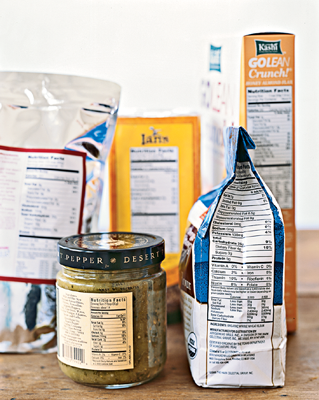 Since 1994, the Food and Drug Administration has required products to carry Nutrition Facts labels that list the amount of calories, calories from fat, total and saturated fat, protein, carbohydrates, fiber, sugar, cholesterol, sodium, vitamins A and C, calcium, and iron per serving.
Since 1994, the Food and Drug Administration has required products to carry Nutrition Facts labels that list the amount of calories, calories from fat, total and saturated fat, protein, carbohydrates, fiber, sugar, cholesterol, sodium, vitamins A and C, calcium, and iron per serving.  Since 1994, the Food and Drug Administration has required products to carry Nutrition Facts labels that list the amount of calories, calories from fat, total and saturated fat, protein, carbohydrates, fiber, sugar, cholesterol, sodium, vitamins A and C, calcium, and iron per serving.
Since 1994, the Food and Drug Administration has required products to carry Nutrition Facts labels that list the amount of calories, calories from fat, total and saturated fat, protein, carbohydrates, fiber, sugar, cholesterol, sodium, vitamins A and C, calcium, and iron per serving.
The most recent addition is trans fat (added in 2006). Many companies have also voluntarily included additional information, such as levels of potassium and mono- and polyunsaturated fats. Read the labels: Studies show those who read Nutrition Facts labels are more likely to eat less foods high in saturated fat than those who dont. All products are required to list the ingredients that are used to make that product. This is especially beneficial when determining if a product contains unhealthy trans fats. Click this for more information about trans fats.
Make sure you understand what the health claims really mean. 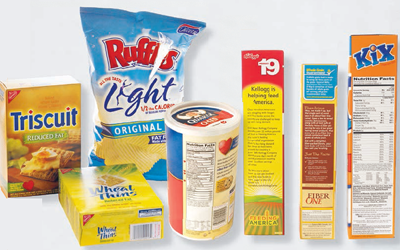 Youll find a variety of health claimstrans fat free, made with whole grains, all naturalsplashed across the packages of a variety of products, but those healthy-sounding phrases dont always tell the whole story. For example, a package may say trans fat free, but, by law, a product can claim to be trans fat free if it has less than 0.5 grams of trans fat per serving . The real way to see if the product is truly free of trans fats is to check the ingredient list to be sure you dont see the words partially hydrogenated oil. If you do, the product has trans fats, despite what the label claims. Weve included tips throughout this book to help you understand package labels.
Youll find a variety of health claimstrans fat free, made with whole grains, all naturalsplashed across the packages of a variety of products, but those healthy-sounding phrases dont always tell the whole story. For example, a package may say trans fat free, but, by law, a product can claim to be trans fat free if it has less than 0.5 grams of trans fat per serving . The real way to see if the product is truly free of trans fats is to check the ingredient list to be sure you dont see the words partially hydrogenated oil. If you do, the product has trans fats, despite what the label claims. Weve included tips throughout this book to help you understand package labels.
Next page
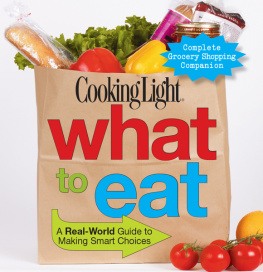
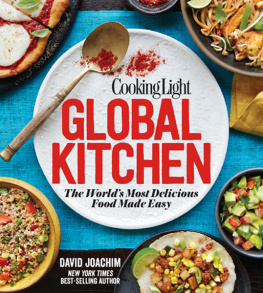
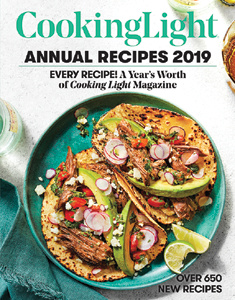
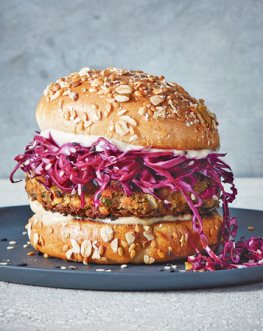

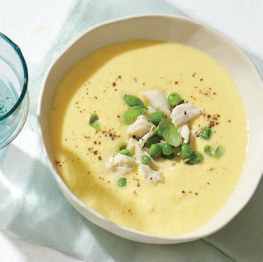

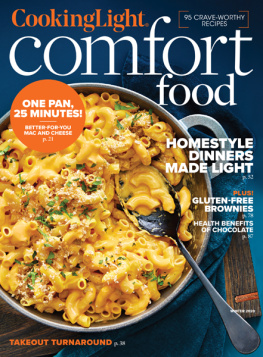
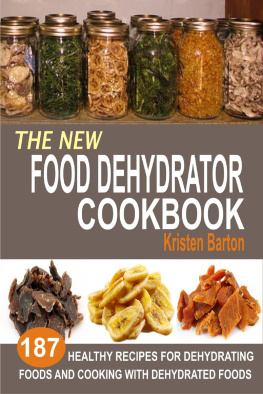

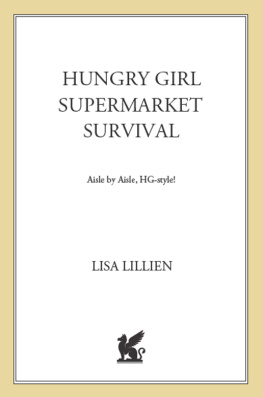
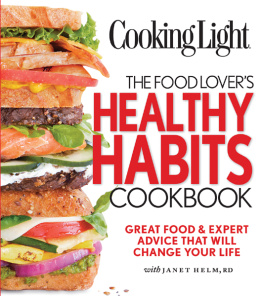
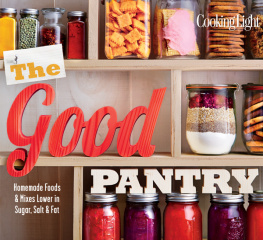


 Cooking Light What To Eat
Cooking Light What To Eat 
 Contents
Contents 





 What to Eat?
What to Eat?  With so many products available in todays grocery stores, that question is often a complicated one for many people who are trying to find foods that fit their nutritional goals. With low-sugar, no-sugar, low-carb, all-natural, organic, and all the other health claims attached to food packages and nutrition labels, healthy eating can be stressfulbut it shouldnt be. Thats where this book comes in. It isnt filled with a list of specific brands of products that may be outdated in a week (although we do provide some of our favorite picks that we use regularly). Instead, weve distilled healthy eating into a set of straightforward guidelines that take you aisle by aisle through the grocery store. We teach you what to look for on the package and the nutrition labelfor any product to help you make the healthiest choice from the options in front of you.
With so many products available in todays grocery stores, that question is often a complicated one for many people who are trying to find foods that fit their nutritional goals. With low-sugar, no-sugar, low-carb, all-natural, organic, and all the other health claims attached to food packages and nutrition labels, healthy eating can be stressfulbut it shouldnt be. Thats where this book comes in. It isnt filled with a list of specific brands of products that may be outdated in a week (although we do provide some of our favorite picks that we use regularly). Instead, weve distilled healthy eating into a set of straightforward guidelines that take you aisle by aisle through the grocery store. We teach you what to look for on the package and the nutrition labelfor any product to help you make the healthiest choice from the options in front of you. Scott Mowbray, Editor Our Grocery Store Guide
Scott Mowbray, Editor Our Grocery Store Guide  Our Guide to the Healthiest Shopping Healthy eating begins in the grocery store. Here are the basic tips for getting startedtheyll help your health and your budget.
Our Guide to the Healthiest Shopping Healthy eating begins in the grocery store. Here are the basic tips for getting startedtheyll help your health and your budget. Shopping along the outside edges of the grocery store is the easiest way to amp up the nutritional quality of what you eat. Thats because the perimeter is where a majority of stores feature inherently healthy foodsfresh fruits and vegetables, fish, meats, poultry, and dairy products. Youll also want to shop the aisles containing 100% whole-grain breads and pastas and whole grains such as oatmeal, barley, and quinoa. Compare apples to apples (and chicken to chicken).
Shopping along the outside edges of the grocery store is the easiest way to amp up the nutritional quality of what you eat. Thats because the perimeter is where a majority of stores feature inherently healthy foodsfresh fruits and vegetables, fish, meats, poultry, and dairy products. Youll also want to shop the aisles containing 100% whole-grain breads and pastas and whole grains such as oatmeal, barley, and quinoa. Compare apples to apples (and chicken to chicken).  Skinless, boneless chicken breasts: $5.49 per pound
Skinless, boneless chicken breasts: $5.49 per pound  Whole chicken: $1.28 per pound Compare the prices of similar items.
Whole chicken: $1.28 per pound Compare the prices of similar items. Buying in bulk the foods you eat often can save you money. Steel-cut oats bought from the bulk bin, for instance, are $0.89 per pound, while a tin runs $3.35 a pound. Lentils, beans, and chickpeas are also great bulk savers, as well as large bags of rice. However, not all foods are cheaper in bulk, so youll need to do your homework to be sure. Click this for information about comparing the prices of similar items.
Buying in bulk the foods you eat often can save you money. Steel-cut oats bought from the bulk bin, for instance, are $0.89 per pound, while a tin runs $3.35 a pound. Lentils, beans, and chickpeas are also great bulk savers, as well as large bags of rice. However, not all foods are cheaper in bulk, so youll need to do your homework to be sure. Click this for information about comparing the prices of similar items. Since 1994, the Food and Drug Administration has required products to carry Nutrition Facts labels that list the amount of calories, calories from fat, total and saturated fat, protein, carbohydrates, fiber, sugar, cholesterol, sodium, vitamins A and C, calcium, and iron per serving.
Since 1994, the Food and Drug Administration has required products to carry Nutrition Facts labels that list the amount of calories, calories from fat, total and saturated fat, protein, carbohydrates, fiber, sugar, cholesterol, sodium, vitamins A and C, calcium, and iron per serving.  Youll find a variety of health claimstrans fat free, made with whole grains, all naturalsplashed across the packages of a variety of products, but those healthy-sounding phrases dont always tell the whole story. For example, a package may say trans fat free, but, by law, a product can claim to be trans fat free if it has less than 0.5 grams of trans fat per serving . The real way to see if the product is truly free of trans fats is to check the ingredient list to be sure you dont see the words partially hydrogenated oil. If you do, the product has trans fats, despite what the label claims. Weve included tips throughout this book to help you understand package labels.
Youll find a variety of health claimstrans fat free, made with whole grains, all naturalsplashed across the packages of a variety of products, but those healthy-sounding phrases dont always tell the whole story. For example, a package may say trans fat free, but, by law, a product can claim to be trans fat free if it has less than 0.5 grams of trans fat per serving . The real way to see if the product is truly free of trans fats is to check the ingredient list to be sure you dont see the words partially hydrogenated oil. If you do, the product has trans fats, despite what the label claims. Weve included tips throughout this book to help you understand package labels.